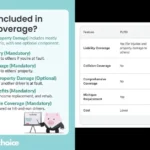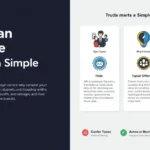Understanding tam sam som is crucial in the field of education, especially for edtech startups, educational publishers, and institutions planning to launch new products or expand their services. This strategic framework helps quantify market potential by segmenting it into Total Addressable Market (TAM), Serviceable Available Market (SAM), and Serviceable Obtainable Market (SOM). By applying this model, education sector stakeholders can evaluate opportunities, allocate resources effectively, and forecast realistic growth.
What Is TAM SAM SOM in the Context of Education?
This context framework simplifies market sizing and offers clarity for decision-making. It is particularly beneficial in educational innovation, where understanding the scope and reach of new tools, curricula, or platforms can make or break an initiative.
Total Addressable Market (TAM)
TAM refers to the entire market demand for an educational product or service. For example, an online learning platform might consider the global K-12 market as its TAM. It represents the maximum revenue opportunity if the business could serve 100% of the market without constraints.
Serviceable Available Market (SAM)
SAM narrows the scope to those users who could realistically benefit from the product based on factors like geography, language, or curriculum compatibility. For an edtech company in Canada, SAM might include all English-speaking schools with stable internet access.
Serviceable Obtainable Market (SOM)
SOM is the segment of SAM that the organization can realistically capture in the short term, considering its current resources, brand presence, and distribution channels. If the same Canadian edtech startup can target only 100 schools in its first year, that would be its SOM.
Why Educators and Administrators Should Understand Tam Sam Som
Grasping tam sam som empowers educational professionals to make informed choices. Whether evaluating a new learning management system or launching a skill development program, understanding market dynamics ensures investments are data-driven and sustainable.
Strategic Budget Allocation
By knowing the SOM, institutions can better allocate funding, target the right demographics, and avoid overextending their budgets.
Program Development Insights
TAM and SAM provide a macro and micro view, helping curriculum developers create content that addresses both broad and niche needs effectively.
Applying the Tam Sam Som Framework in Education Startups
Education startups often operate under tight budgets and need to demonstrate traction early. Implementing methodology of this context aids in pitching to investors, refining go-to-market strategies, and aligning internal teams on realistic expectations.
Case Study: Launching an EdTech App
Imagine a startup developing a mobile app for SAT preparation.
- TAM: All high school students globally preparing for college entry exams.
- SAM: English-speaking high school students in the United States.
- SOM: 50,000 students in California reached via school partnerships and local ads.
By quantifying potential reach at each level, founders can set achievable goals and measure progress over time.
Comparison Table: TAM SAM SOM in Education
| Feature | TAM | SAM | SOM |
| Cost to Analyze | High (requires large datasets) | Moderate (localized research) | Low (direct surveys or analytics) |
| Efficiency | Broad insights, less actionable | Focused on feasible opportunities | Highly actionable and precise |
| Ease of Use | Complex for newcomers | Manageable with clear filters | Simple for internal planning |
| Scalability | Very scalable | Scalable within regions | Scalable as team/resources grow |
| Benefits | Big-picture vision | Targeted outreach | Tactical growth strategy |
Integrating Tam Sam Som Into Educational Planning
Strategic planning in education increasingly borrows from business frameworks to boost impact and accountability. This model helps stakeholders translate vision into numbers.
For Educational Institutions
Schools and universities expanding programs—especially online or hybrid offerings—use this framework to estimate demand and feasibility. For instance, a university launching a new data science program may calculate TAM based on job market data, SAM based on qualified applicants, and SOM based on current faculty and infrastructure.
For Policymakers
Government agencies involved in curriculum design or digital education rollouts can use TAM to identify potential beneficiaries and SOM to assess rollout capacity. This improves efficiency and transparency in public spending.
Using Market Data to Estimate TAM SAM SOM
Market sizing in education requires credible data sources and logical segmentation.
- Estimating TAM: Combine population statistics with relevant education metrics. For example, number of students in secondary education across the globe.
- Estimating SAM: Filter the TAM by factors like age, location, medium of instruction, or technological accessibility.
- Estimating SOM: Base projections on pilot programs, outreach capacity, and actual adoption trends.
Tools to Support Market Analysis
While advanced platforms are available, even spreadsheets and basic analytics can aid initial tam sam som calculations. Surveys, institutional data, and government reports are also key resources.
Challenges in Using Tam Sam Som in Education
Although the framework is invaluable, applying this model to education comes with unique challenges.
Data Fragmentation
Education data is often dispersed across districts, states, or countries, making accurate TAM estimates complex. Overcoming this requires building partnerships or investing in research.
Non-Commercial Stakeholders
Educational markets involve a range of non-commercial stakeholders like governments and NGOs. This makes market behavior less predictable compared to traditional consumer markets.
Cultural and Policy Barriers
SAM and SOM are significantly influenced by local policies, cultural acceptance, and curriculum standards. For example, an app designed for self-paced learning might face resistance in systems where classroom instruction is preferred.
Overcoming Barriers: Best Practices
To implement the tam sam som model effectively in educational contexts:
- Validate Assumptions: Use pilot projects to verify market assumptions before scaling.
- Involve Stakeholders: Include teachers, students, and administrators early in the planning phase.
- Iterate Frequently: As educational markets evolve, so should your market sizing estimates.
- Align With Learning Outcomes: Ensure your solution addresses real educational challenges, not just market gaps.
Future Trends and Tam Sam Som in Education
With the rapid digital transformation of education, this is becoming more critical than ever.
Personalized Learning and AI
Products using AI to deliver personalized content are changing how TAM is defined. Instead of focusing on institutions, these tools directly target learners, opening new dimensions of market segmentation.
Cross-Border Education
The globalization of education through MOOCs and international curricula increases TAM but requires refined methods to estimate SOM due to legal and linguistic constraints.
Government Partnerships
As more governments adopt technology in public education, SAM and SOM estimations need to factor in procurement cycles and compliance requirements.
Conclusion
The tam sam som model provides a robust foundation for educational market analysis, helping institutions, startups, and policymakers make informed, data-backed decisions. Whether you’re launching a new curriculum, rolling out an edtech product, or expanding institutional capacity, this framework ensures your goals are aligned with actual market potential. Strategic use of this model empowers educational initiatives to succeed through clarity, precision, and scalability.
FAQs
What does TAM SAM SOM stand for in education?
TAM is the Total Addressable Market, SAM is the Serviceable Available Market, and SOM is the Serviceable Obtainable Market. These help educational stakeholders understand potential market size and realistic reach.
How is TAM different from SAM in educational planning?
TAM refers to the maximum possible demand for an educational product or service, while SAM considers only those who could realistically use it based on geographic, technological, or curriculum constraints.
Why is SOM important for edtech startups?
SOM helps startups identify what portion of the market they can actually capture in the near term. This aids in resource allocation, investor communication, and measuring success.
Can schools use this context or model for internal program evaluation?
Yes, schools can apply this framework to estimate interest in new courses or extracurricular activities. It supports evidence-based planning and avoids overcommitment.
What tools can help calculate TAM SAM SOM in education?
Basic tools like spreadsheets, institutional records, surveys, and analytics platforms can assist. More advanced modeling may involve specialized market research or forecasting software.
How often should educational organizations update their TAM SAM SOM estimates?
Market conditions, technology adoption, and educational policies change frequently. It’s advisable to update estimates annually or when launching new initiatives.











